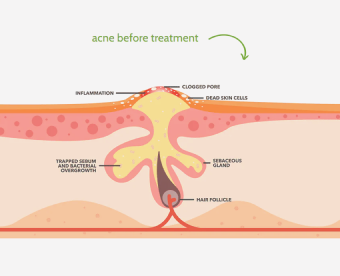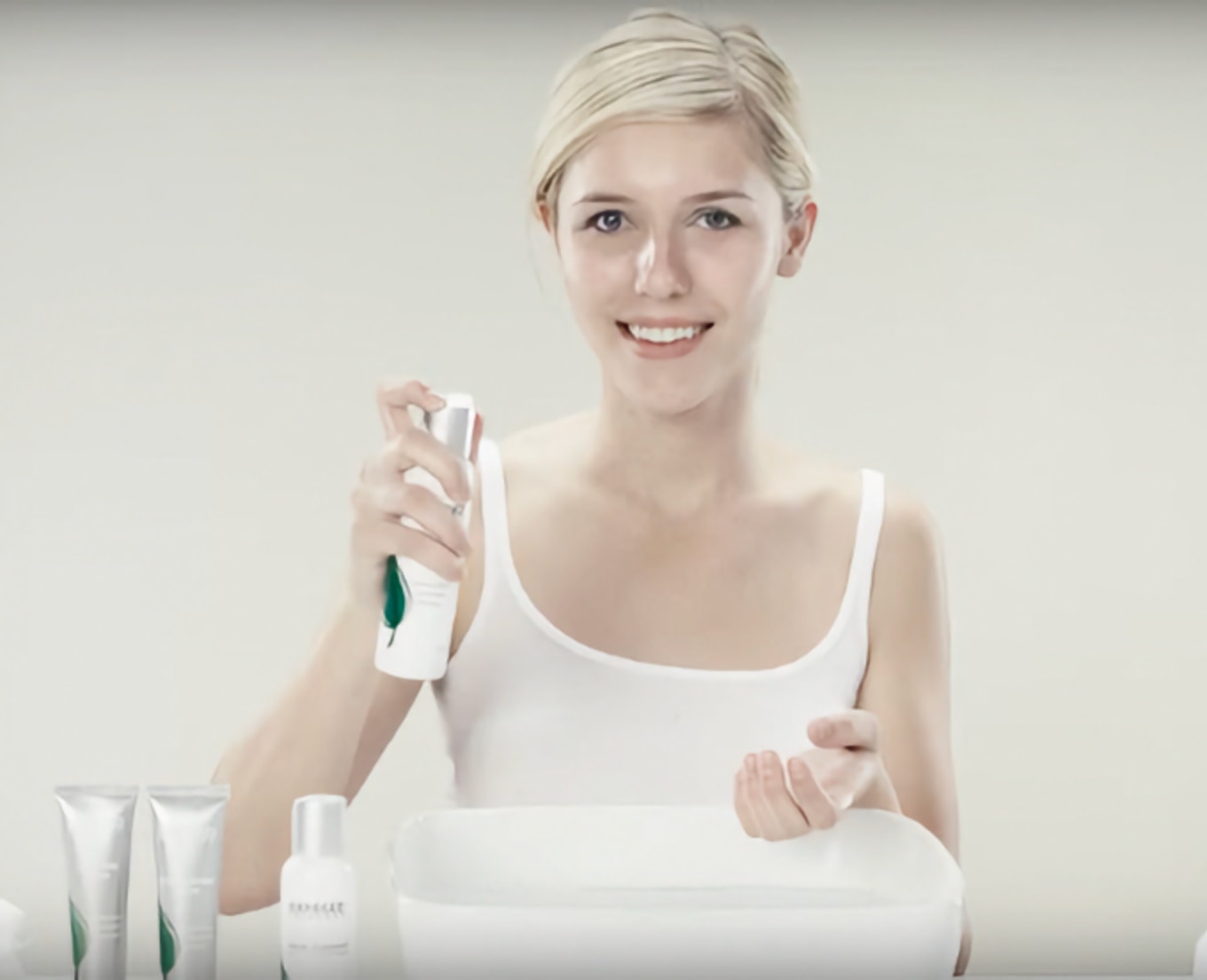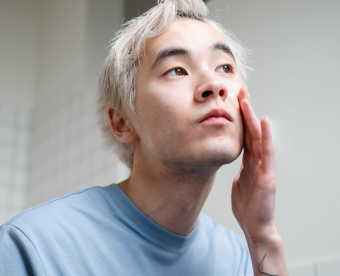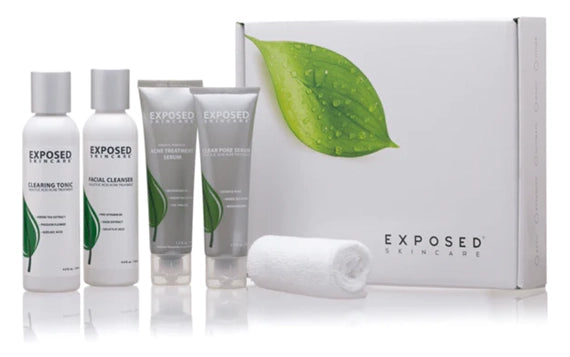Acne is one of the most common skin conditions affecting people worldwide. Most of us are familiar with facial acne, but acne can also appear on other parts of the body.
One type that receives less attention but can be equally distressing is truncal acne. Unlike facial acne, truncal acne affects the chest, back, and shoulders. This comprehensive guide aims to demystify truncal acne, exploring its causes, symptoms, and available treatment options.
Also read: How to choose the best acne treatment
Biggest Take-Aways:
- Truncal acne is a unique form of acne that affects the chest and back, requiring specific treatment options.
- Advances in treatments, including sarecycline, offer new possibilities for effectively managing both facial and truncal acne.
- A comprehensive approach that includes both topical and systemic treatments can yield the best results for managing acne.
- Exposed Skin Care offers specialized products that can be an effective part of an integrated acne treatment regime.

What Is Truncal Acne?
Truncal acne is a term used to describe acne that appears on the trunk of the body, which includes the chest, back, and shoulders. It often presents itself as inflammatory lesions, papules, pustules, and comedones. Managing truncal acne can be challenging given the large surface areas involved and the higher risk of scarring.
Types of Truncal Acne Lesions
- Papule: A small, raised red bump.
- Pustule: A pus-filled lesion.
- Comedones: Blackheads and whiteheads.
- Nodule: A large, inflamed bump deep within the skin.
Prevalence of Truncal Acne
Truncal acne is not as rare as one might think. Numerous acne patients experience both facial and truncal acne, requiring a comprehensive approach to treatment.
The Causes of Truncal Acne
Like facial acne, truncal acne occurs due to the overproduction of sebum, bacterial infection, and inflammation of the pilosebaceous unit. However, it is crucial to understand the specific causes that can trigger truncal acne.
- Hormonal Fluctuations: Hormonal imbalances can lead to the overproduction of sebum, causing both facial and truncal acne.
- Excessive Sweating: Sweat can trap bacteria and dead skin cells, aggravating truncal acne development.

- Clothing: Tight-fitting or non-breathable clothing can exacerbate the condition by trapping heat and sweat.
Other Factors
- Poor hygiene
- Excessive use of oily skincare products
- High-stress levels
Treatment Options for Truncal Acne
Treating truncal acne can be a bit more complicated than treating facial acne due to factors such as large surface areas and difficulty applying topical treatments. Let us delve into the various treatment options for truncal acne.
Topical Therapies
- Benzoyl Peroxide: Benzoyl peroxide is an effective antimicrobial agent. However, it can have bleaching effects on clothes and bedsheets.
- Topical Retinoids: Adapalene and other topical retinoids are useful in treating both comedonal and inflammatory truncal acne.
- Topical Antibiotics: While topical antibiotics like dapsone can be effective, bacterial resistance is risky.
Systemic Therapy
- Oral Antibiotics: Doxycycline and tetracycline are common oral antibiotics for treating moderate to severe acne, including truncal acne vulgaris.
- Isotretinoin: Oral isotretinoin is often the treatment of choice for severe inflammatory truncal acne.
- Oral Contraceptives: For women, oral contraceptives can help balance hormones and control acne.

Using topical agents alone or combined with oral antibiotics can be an effective strategy.
Natural Alternatives and Home Remedies
While topical and systemic therapies are generally more effective, some seek natural alternatives for treating truncal acne.
- Azelaic Acid: This naturally occurring acid has antimicrobial and anti-inflammatory properties.
- Apple Cider Vinegar: Rich in acetic acid, it can balance the skin's pH but should be used cautiously due to its acidic nature.
- Tea Tree Oil: Known for its antimicrobial properties, it must be diluted before application to the affected area.

Precautions and Considerations in Truncal Acne Management
Effective management of truncal acne goes beyond merely picking the right therapy. It involves being mindful of several factors that can aid or impede the treatment process.
The Risk of Antibiotic Resistance
Due to the large surface areas involved in truncal acne, the risk of antibiotic resistance is a primary concern.
Side Effects
Isotretinoin and oral antibiotics like minocycline and azithromycin may have side effects that necessitate careful monitoring.
Proper Application
It is important to be mindful of the truncal application for topical therapies. Incorrect topical application can lead to less effective treatment.
Monitoring Efficacy
Long-term safety and efficacy must be considered, especially for treatments like oral isotretinoin.
The Benefits of Using Exposed Skin Care for Managing Acne
Understanding truncal acne is crucial for effective treatment. While many first-line treatment options are available for managing truncal and facial acne, the unique formulations provided by Exposed Skin Care offer unparalleled advantages. Designed specifically for patients with acne, this line of skin care products can benefit acne sufferers.
Here are the benefits of Exposed Skin Care:
- Effective Ingredients: Incorporates active components like sarecycline and trifarotene cream that are proven to mitigate moderate facial and truncal acne.
- Targeted Approach: Products are designed to manage acne on the chest and back, reducing truncal involvement significantly.
- Research-Backed: The effectiveness of these treatments is supported by research and studies.
- Cream Treatments: Specifically designed creams for moderate facial treatment can be particularly useful when acne becomes severe.
By incorporating Exposed Skin Care into your skincare routine, you can effectively manage truncal and combined facial and truncal acne, offering a comprehensive solution to various types of acne.
Conclusion
Understanding and treating truncal acne can be a complex process due to its unique challenges, including the large surface areas like the trunk and face involved. Traditional therapies have helped many, but there is always room for more effective, targeted solutions.
The development of new agents such as sarecycline has shown promising results in addressing both facial and moderate truncal acne, marking advancements in acne treatment techniques. Cream treatment for moderate facial acne is another avenue that has garnered attention.
This indicates that topical solutions remain integral to the therapeutic landscape, especially in localized treatment. While topical therapies can be effective, a well-rounded approach that includes various treatment options can be more beneficial in the long run.
Including products like those from Exposed Skin Care, with their specialized formulations, can contribute to an effective acne treatment regime. With an integrated approach combining traditional and modern treatments, managing truncal acne becomes a possibility and a reality.
FAQs
What is truncal acne?
Truncal acne is a type of acne that appears on the trunk area, including the chest and back.
How does truncal acne differ from facial acne?
Truncal acne typically covers larger surface areas and may require different treatment approaches than facial acne.
What is the effect of sarecycline on acne?
Sarecycline is an antibiotic that has shown promising results in treating facial and truncal acne.
What are the benefits of using Exposed Skin Care products?
Exposed Skin Care offers specialized formulations that effectively manage facial and truncal acne, providing a comprehensive treatment solution.
















